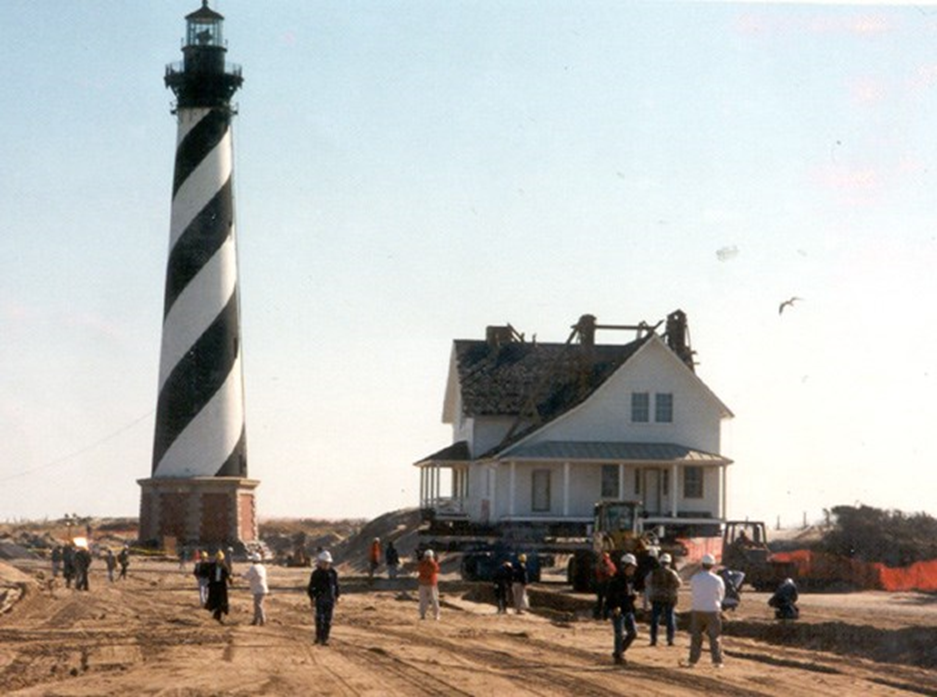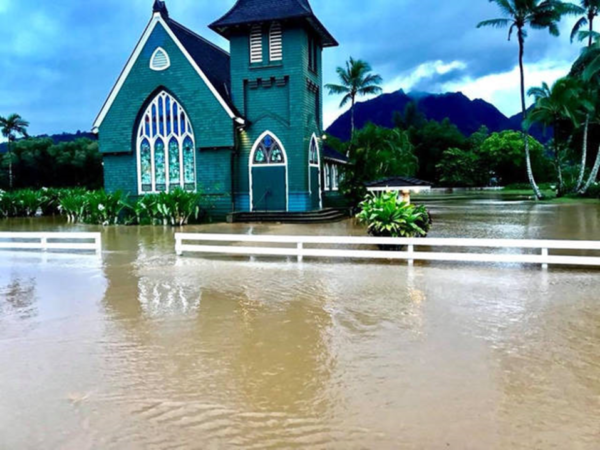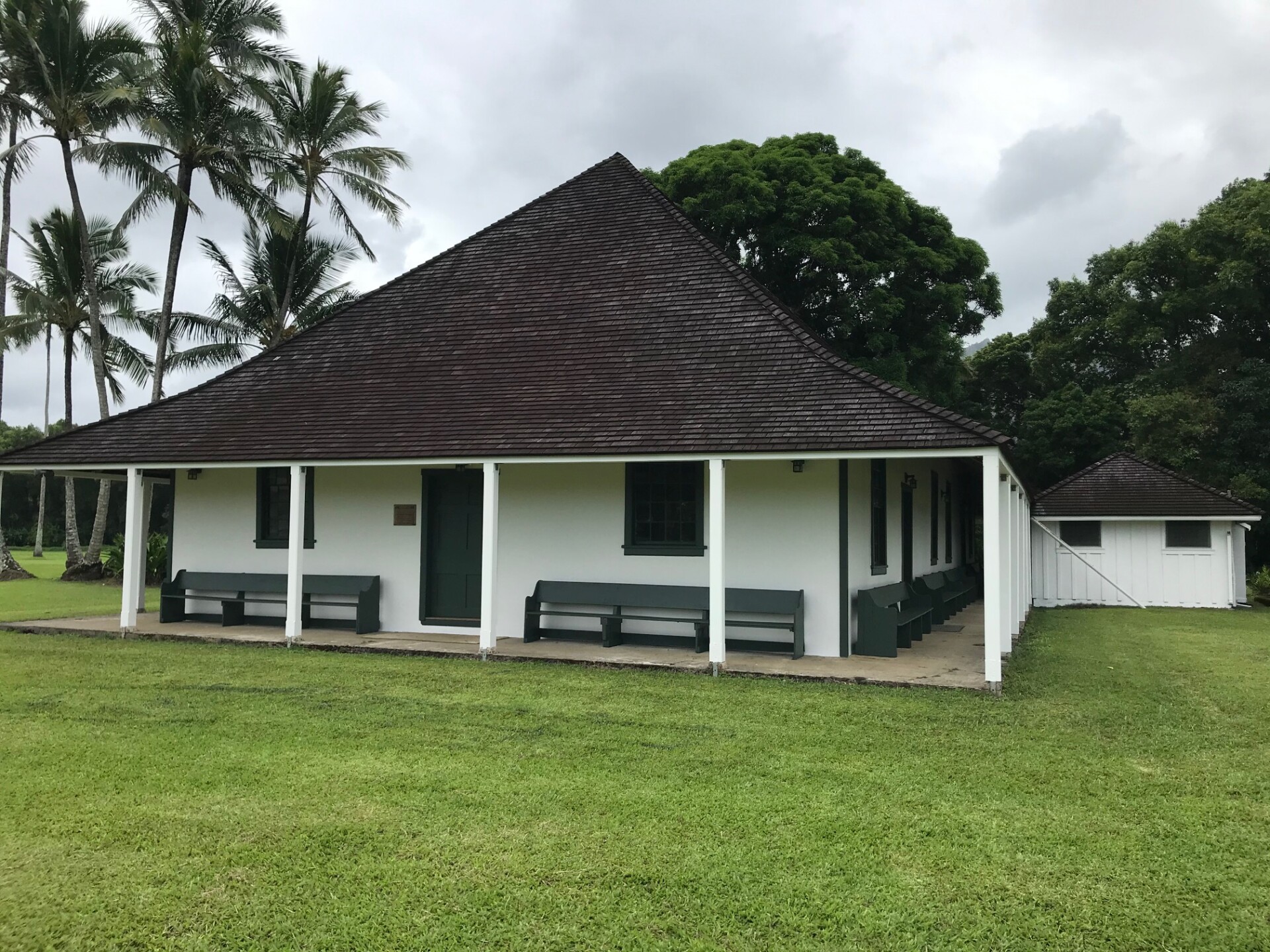
By Virginia Murison, Consulting Preservation Architect
Flooding risk has long been a major challenge for many historic properties. Changing weather patterns, stronger hurricanes and other extreme weather events, sea level rise, increased nuisance flooding, king tides, and continuing development in flood plains are some of the factors increasing the risk of flooding events, both in terms of their frequency and magnitude
In November of 2019 the National Park Service published Guidelines on Flood Adaptation for Rehabilitating Historic Buildings (Flood Guidelines) in response to a request for technical preservation guidance specific to historic properties at risk of flooding.
Purpose
The goal of the “Flood Guidelines” is to provide information about how to adapt historic buildings to be more resilient to flooding risk in a manner that will preserve their historic character and that will meet The Secretary of the Interior’s Standards for Rehabilitation (SOI Standards). These guidelines should be used in conjunction with the Guidelines for Rehabilitating Historic Buildings that are part of The Secretary of the Interior’s Standards for the Treatment of Historic Properties, issued in 2017.
The “Guidelines” are general and intended to provide guidance in interpreting and applying the SOI Standards to rehabilitation projects involving buildings that are at a risk for flooding. They are not meant to give case-specific advice.
Application
- The Guidelines on Flood Adaptation should only be applied to historic properties with an established risk of flooding.
- Adaptation treatments should increase the building’s resilience to flooding risks as much as possible, but should do so without destroying significant historic materials, features, or spaces.
Adaptation Treatments
The treatments described may require more change than would normally be acceptable in other contexts. Consequently, such treatments would generally not be appropriate to use in the majority of rehabilitation projects when the historic building does not have a flood risk. The adaptation treatments are:
- Planning and Assessment for Flood Risk Reduction
- Temporary Protective Measures
- Site and Landscape Adaptations
- Protect Utilities
- Dry Floodproofing
- Wet Floodproofing
- Fill the Basement
- Elevate the Building on a New Foundation
- Elevate the Interior Structure
- Abandon the First Story
- Move the Historic Building

Wai‘oli Hui‘ia Church, Hanalei, Kaua‘i. 2019 Flood. Courtesy Susan Ferrell.
The historic Waiʻoli Huiʻia Mission Hall and Sanctuary buildings sustained substantial flooding in a devastating flood. With help from an HHF Preservation Grant, repairs to the Sanctuary building and Mission Hall were completed in February 2021.
Project Planning
Before undertaking any work to adapt a historic building to be more resilient to potential flooding, research about the actual flood risk as well as the historic property must be undertaken.
- Identify the historic property’s flood risks and vulnerabilities and any existing capacity for resilience
- Identify historic materials, features, and spaces that are important in defining the historic character of the property
- Document the property and character-defining features as a record and guide for future repair work, should it be necessary, and store the documentation in a weatherproof location with at least one duplicate at a secure site.
- Ensure that, when planning work to adapt for flooding, all feasible alternatives are considered and that the options requiring the least alteration are considered first.
Select Considerations for Adaptation Treatments
Site and Landscape Adaptations
The advantage of these options is that the historic building itself generally remains unaltered. The relationship of a building to its site and setting is important to the preservation of its historic character.
Altering the existing site conditions must be done with thoughtful examination of potential impacts to neighboring properties adjacent to and downstream from a property.
Dry Floodproofing
Dry floodproofing is an adaptation method designed to keep water out of a building. This treatment requires establishing a watertight seal on the exterior of the foundation and sealing all interior spaces below the established flood risk level.
This adaptation method will require a high frequency of maintenance when exposed to repeated flooding. It is a more appropriate treatment to use where the flood risk is infrequent or below three feet
Wet Floodproofing
Wet floodproofing allows water to enter a historic building during a flood event and drain out as the flood waters recede. It is not recommended where flooding is expected to exceed 24 hours in duration.
This adaptation method is generally not appropriate for a historic building that still retains a high level of historic materials, features, finishes, and spaces at or below the established flood risk level because it could result in their loss.
Fill the Basement
One treatment measure to provide flood protection for a historic building that will have minimal impact on its character is to fill in the basement. However, this method can only be used for a basement that is below ground level on all sides and of masonry construction.
If the basement contributes to the significance of the property or includes significant historic features, such as a fireplace, dumbwaiter, or an innovative historic heating system, this treatment is not recommended.
Elevate the Building on a New Foundation
This adaptation method involves raising the height of a building by lifting the building from the existing foundation, constructing a new, higher foundation, and resetting the building on the new foundation. The size, scale, height, and massing of a building will affect how much change in height may be acceptable without impacting the historic character of the property.
As the height of a building increases, meeting the Standards will be more challenging. With some exceptions, elevating a small building to a height approaching a full story will not meet the Standards for Rehabilitation.
While this is one of the most common solutions for residential buildings at risk from flooding, when the change in height of the
new foundation is significantly different from the original height, the historic character and appearance of the building can be considerably impacted. As a result, elevating a building on a new foundation can greatly affect the historic character and integrity of the building, and any associated historic district if not carefully planned and considered.
Elevate the Interior Structure
This treatment involves removing the existing first- or ground-floor level and replacing it with a new floor plate at a level above the established flood risk level while the exterior structure remains virtually unchanged. This treatment is most suitable for buildings with large-volume first-floor spaces, such as Main Street commercial buildings.
This treatment can have a significant impact on historic buildings with intact, character-defining first-floor spaces. Generally, the first floor contains many of the building’s character-defining spaces, features, and materials. Depending on the historic integrity of the building before the adaptation begins, such changes can result in the loss of historic character.
Abandon the First Story
This adaptation method requires modifying a multi-story building to relocate all living spaces to upper floors above the established flood risk level. The abandoned first story must be altered and adapted into a utilitarian wet or dry floodproofed space.
Several structural issues associated with this treatment must be evaluated. These include assessing the walls, columns, and footings and potentially anchoring the building differently, depending on
the existing connections. The building structure must be able to support a filled basement, moving water beneath it, or keeping water out of the building. Refer to Fill the Basement, Wet Floodproofing or Dry Floodproofing, as applicable.
Move the Historic Building
Moving a historic building requires separating the building from its foundation and relocating it to a new site and foundation. Relocating a historic building is generally not a recommended preservation practice. Moving a historic building is usually considered only when the property is expected to flood repeatedly, succumb to river or shoreline erosion, or is subject to permanent inundation due to sea level rise or subsidence
Moving a building to a new site requires a significant amount of preparation. Depending on the distance and the route to the new location, coordination with local highway departments, police departments, local permitting agencies, and utility companies may be required.
State and Tribal Historic Preservation Offices (SHPO/THPO) play a vital role in determining whether the building’s historic designation can be retained in a new location, as per Federal regulations (36 CFR Part 60).
Demolition
In this section demolition refers to the complete removal of a historic building and any related structures in order to clear a historic site within an established flood risk level of any occupied structures. It is important to understand that demolition is not a treatment that meets the Standards for Rehabilitation.
The Standards were created to support the preservation of historic buildings. Demolition is never a recommended treatment. However, in making land-use and planning decisions for a community or neighborhood, there may be situations when it is necessary to identify sacrificial historic sites or structures.

Cape Hatteras Lighthouse on the move. Image courtesy National Park Service
In 1999, the Cape Hatteras Light Station, which consists of seven historic structures, was successfully relocated 2,900 feet from the spot on which it had stood since 1870. Because of the threat of shoreline erosion, a natural process, the entire light station was safely moved to a new site where the historic buildings and cisterns were placed in spatial and elevational relationship to each other, exactly as they had been at the original site.
The National Park Service has developed these guidelines for adapting historic buildings to flooding risks in accordance with its directive to provide information concerning professional methods and techniques to ensure the preservation and rehabilitation of the historic properties that are an important part of the nation’s heritage.
See the full guidelines and additional technical resources at https://www.nps.gov/articles/000/guidelines-on-flood-adaptation-for-rehabilitating-historic-buildings.htm



